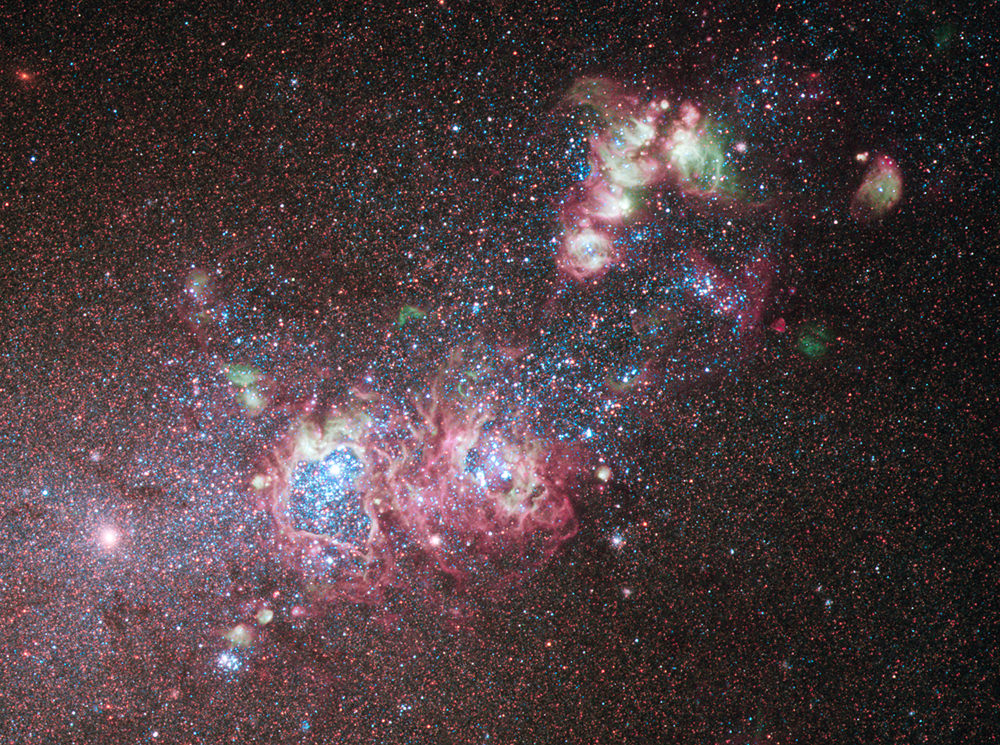[/caption]
Lots of activity taking place inside NGC 4214, and Hubble has peered inside this dwarf galaxy to see stars in all stages of their evolution, as well as gas clouds with huge cavities blown out by stellar winds. Wow! Also visible are bright stellar clusters and complex patterns of glowing hydrogen, some forming a candy-cane-like structure in the upper right of this optical and near-infrared image. NGC 4214 is located in the constellation of Canes Venatici (The Hunting Dogs), about 10 million light-years away. Hubble scientists say this galaxy is an ideal laboratory to research the triggers of star formation and evolution.
Observations of this dwarf galaxy have also revealed clusters of much older red supergiant stars. Additional older stars can be seen dotted all across the galaxy. The variety of stars at different stages in their evolution indicates that the recent and ongoing starburst periods are not the first, and the galaxy’s abundant supply of hydrogen means that star formation will continue into the future.
This color image was taken using the Wide Field Camera 3 in December 2009. See the HubbleSite for a larger view of this colorful galaxy.

